TECH
Laten we het over technologie hebben! We streven ernaar om u uitgebreide informatie te bieden over onze producten en de gebruikte technologieën. De hoeveelheid informatie op verschillende platforms kan overweldigend zijn. Ons doel is om technologie en gerelateerde vragen op een begrijpelijke manier uit te leggen.
Voor meer informatie kunt u de pagina hieronder bekijken ↓
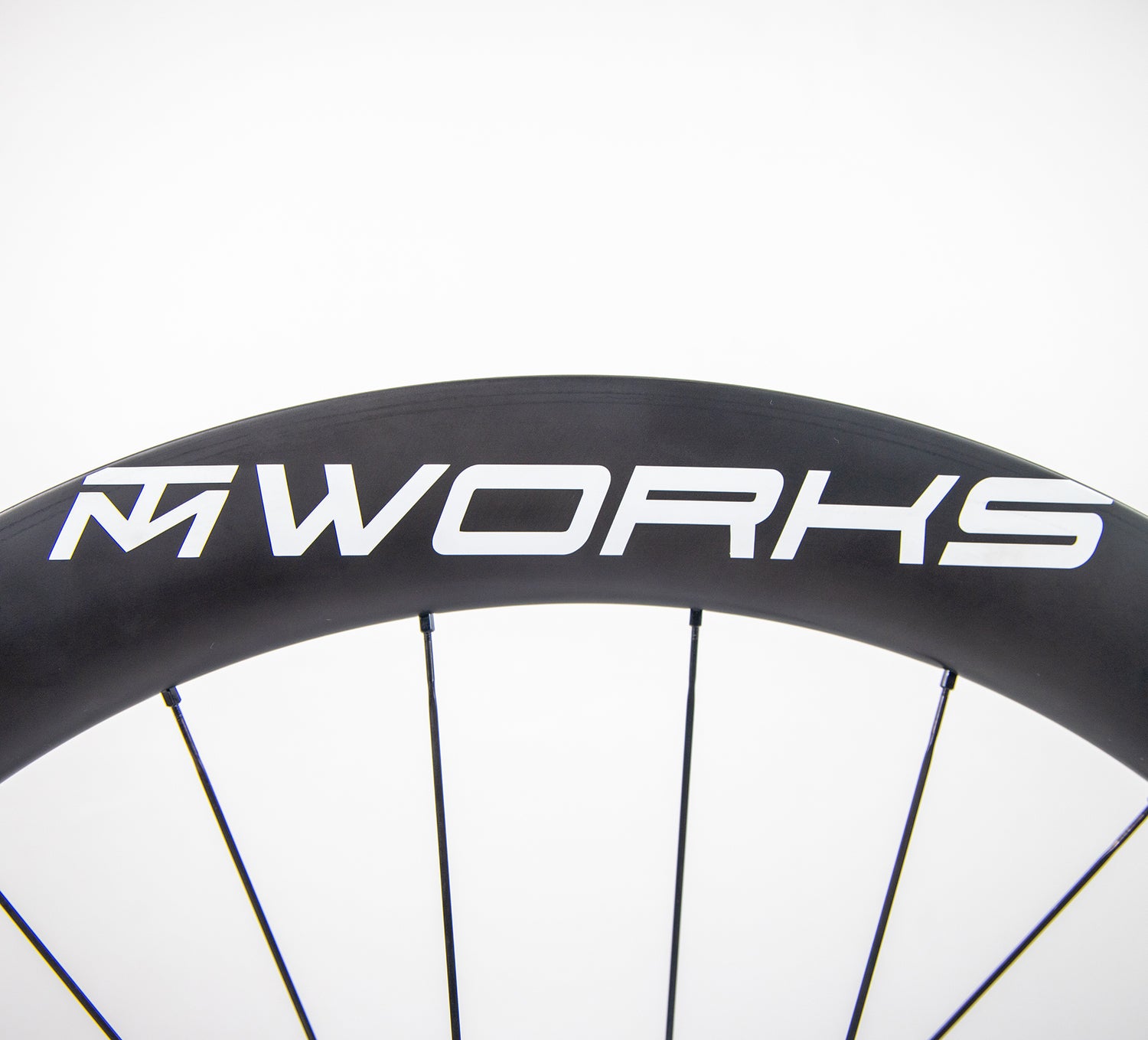
Velgdiepte
Een van de meest gestelde vragen over dit onderwerp is: welke velghoogte moet ik kiezen? Het antwoord op deze vraag hangt af van meerdere factoren. Over het algemeen zal een diepere velg aerodynamischer zijn, maar ook minder stabiel bij sterke zijwind. Een ander compromis bij een diepere velg is het extra gewicht. Daarom ligt de meest gebruikelijke velghoogte voor algemeen gebruik meestal tussen de 40-60 mm.
Bij het bespreken van velghoogte worden vaak de drie grote S'en genoemd. De drie S'en staan voor: stabiliteit, snelheid en stijfheid. Een diepere velg zal over het algemeen sneller en stijver zijn dan een ondiepere velg, maar zal stabiliteit opofferen bij sterke zijwind. Ook het gewicht van de rijder en het type rijden zijn factoren die moeten worden overwogen. Een zwaardere rijder zal het doorgaans gemakkelijker vinden om met sterke zijwind om te gaan op een velg met een vergelijkbare hoogte dan een lichtere rijder.
Lees verder op onze pagina voor meer informatie.
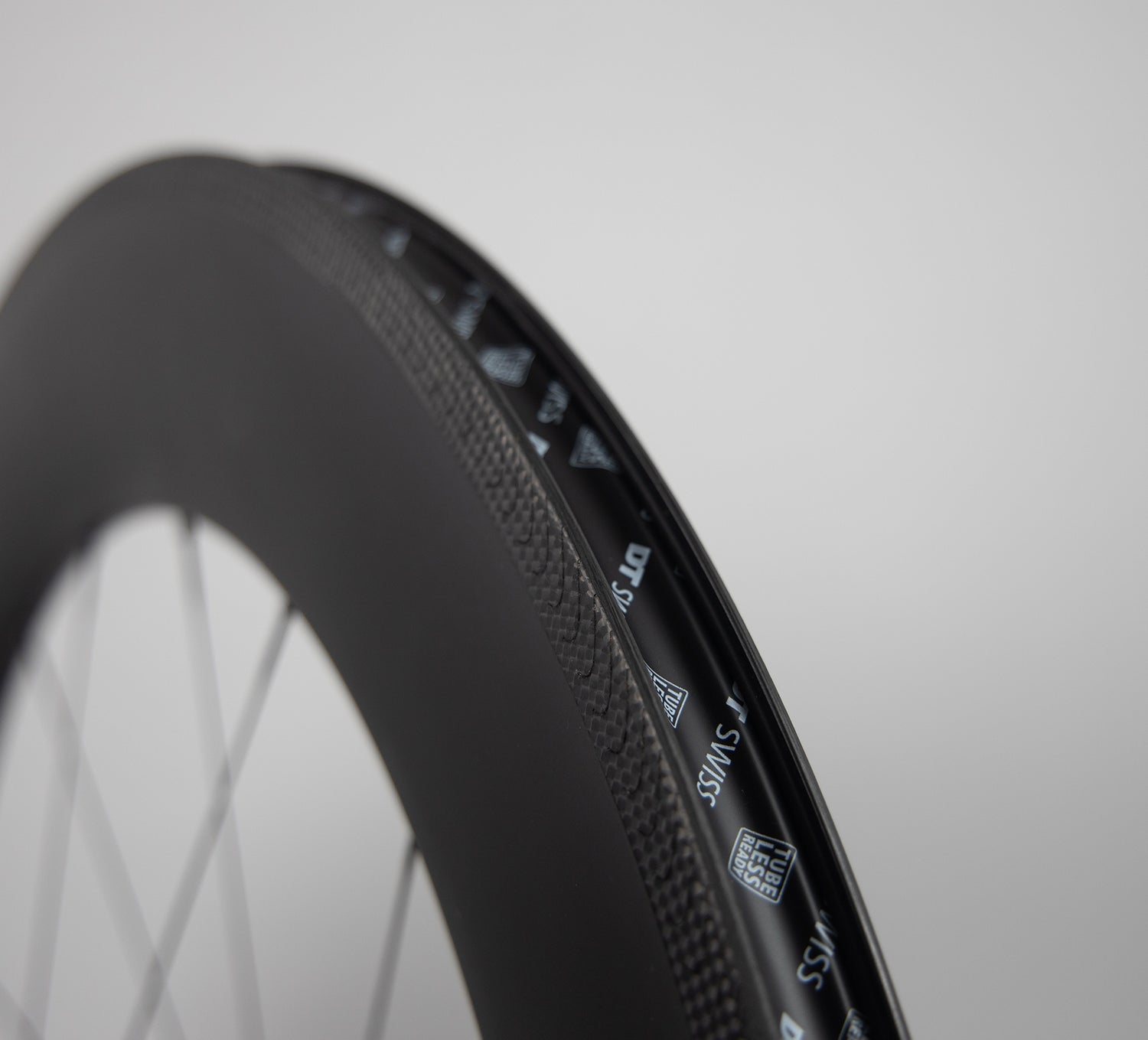
Velgbreedte
In de afgelopen jaren is de populariteit van bredere velgen toegenomen. Terwijl 15 mm tot 17 mm interne velgbreedte vroeger de standaard was, neigt de industrie nu naar velgen met een interne breedte van 21 mm tot 23 mm. De bredere velg biedt een groter volume in de band, waardoor de band zich vormt tot een optimalere vorm, wat resulteert in betere handling en controle.
Hoewel smallere velgen minder frontaal oppervlak hebben en dus minder luchtweerstand, lijkt dat voordeel in de praktijk te verdwijnen zodra de windhoek niet perfect in lijn is met de velg. Het is echter belangrijk op te merken dat sommige framesets niet geschikt zijn voor brede velgen! Zorg ervoor dit te controleren voordat u uw nieuwe droomwielset aanschaft. Lees meer.
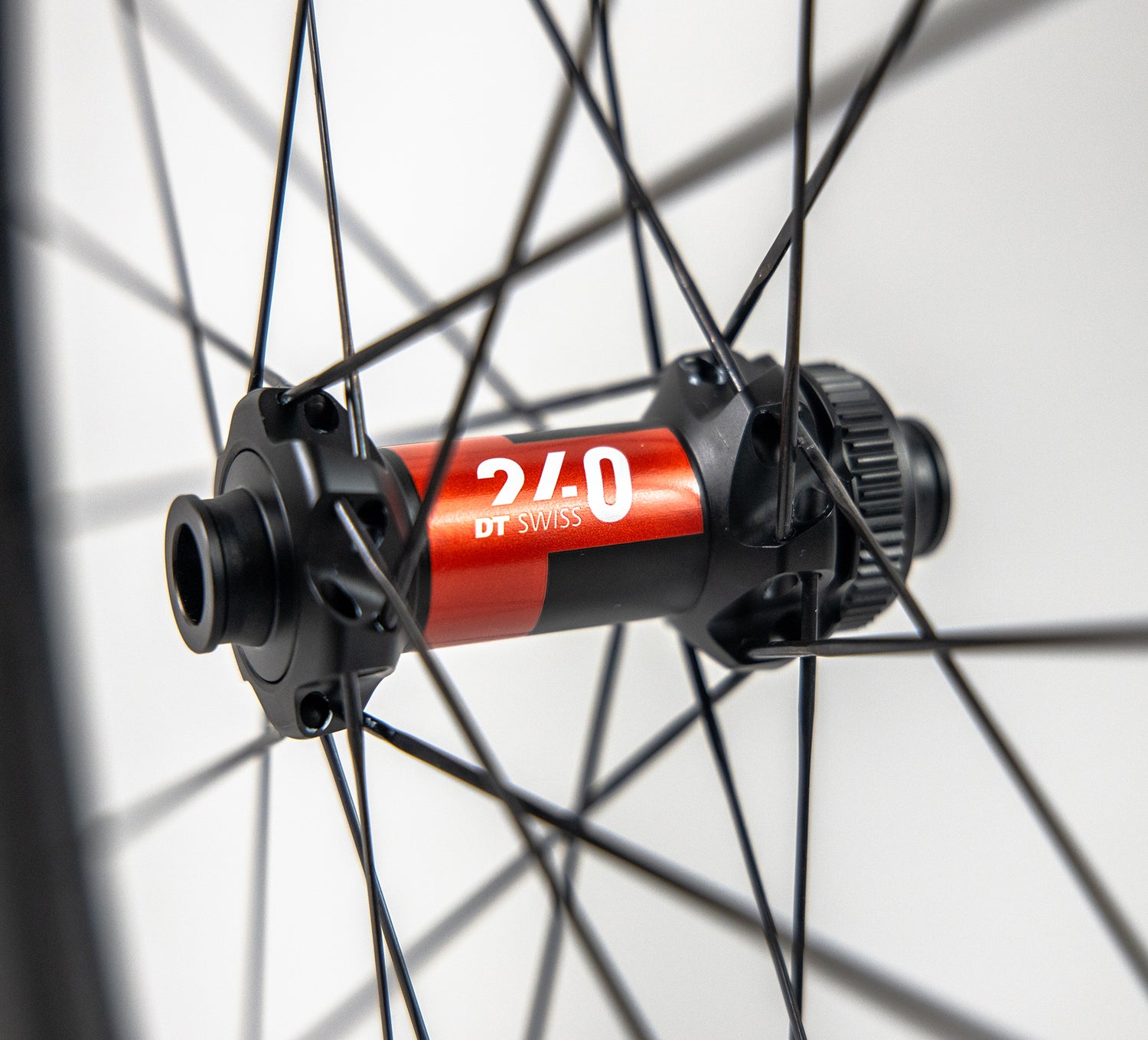
Naven
Er zijn tal van naven beschikbaar op de markt, maar wat zijn de verschillen en is het de moeite waard om te upgraden? Verschillen tussen naven komen terug in een paar aspecten: gewicht, duurzaamheid, type aangrijpmechanisme en onderhoudbaarheid. Bij TMWORKS kiezen we er alleen voor om te bouwen met DT Swiss, behalve wanneer u op zoek bent naar dat speciale accent via onze custom service.
DT Swiss staat bekend om zijn onderhoudbaarheid, laag gewicht en duurzaamheid dankzij goede afdichting van lagers en een robuust aangrijpmechanisme. De DT180, DT240 en DT350 zijn de verschillende modellen van DT Swiss. De verschillen tussen de naven komen voort uit gewicht, roestvrijstalen lagers versus keramische lagers, en het type aangrijpmechanisme.
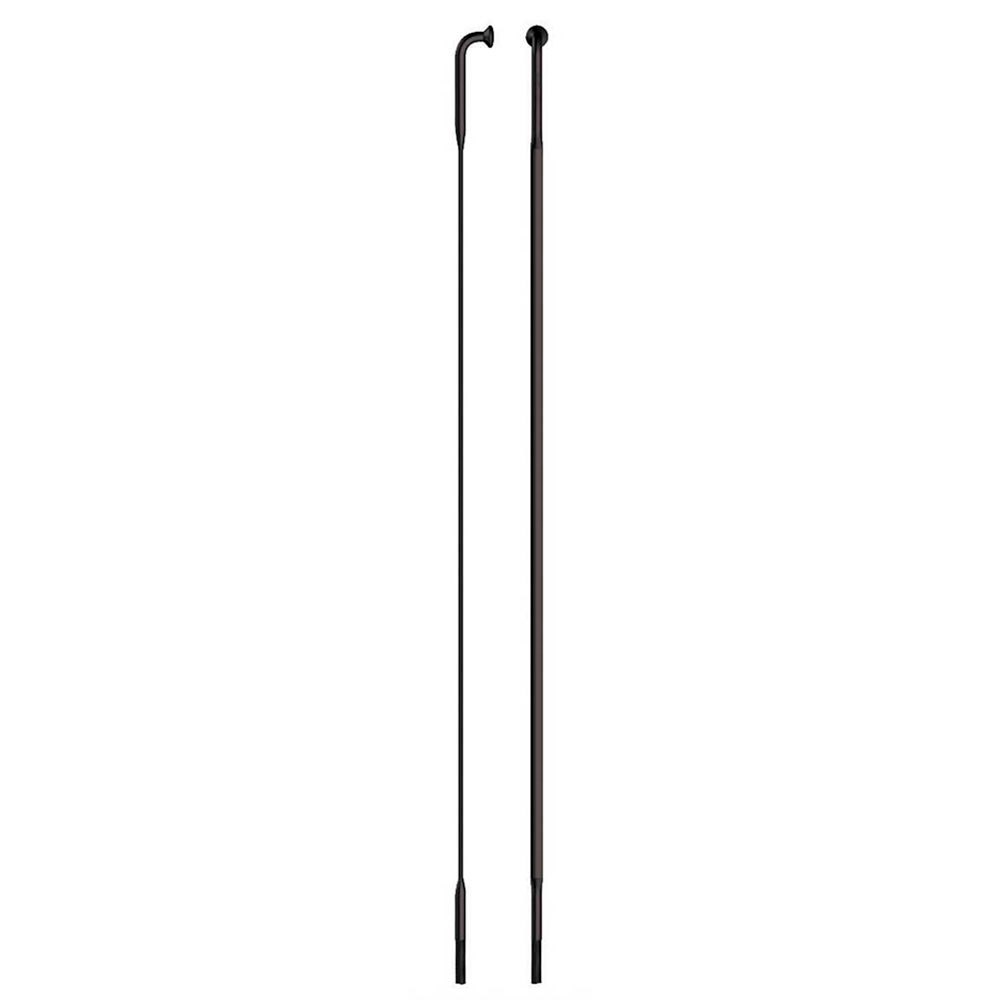
Spaken & spaakpatronen
Er zijn talloze soorten spaken verkrijgbaar op de markt, elk verschillend in vorm, materiaal en beoogd gebruik. Denk aan platte aero-spaken, stijve sprint-spaken, lichtgewicht klim-spaken en alles daartussenin. Bij TMWORKS maken we gebruik van Sapim, een bedrijf dat bekend staat om zijn hoogwaardige spaken.
In onze wielsets combineren we Sapim's CX-Ray aero-spaak en de CX-Sprint spaak. De CX-Ray staat bekend als de lichtste, stijfste en vermoeiingsbestendige roestvrijstalen spaak. De CX-Sprint is daarentegen iets zwaarder, maar stijver. We gebruiken deze spaak aan de aandrijfzijde van het achterwiel, waar de cassette alle kracht op het wiel overbrengt. Met deze combinatie wordt een optimale balans gevonden tussen gewicht en stijfheid waar dat nodig is.
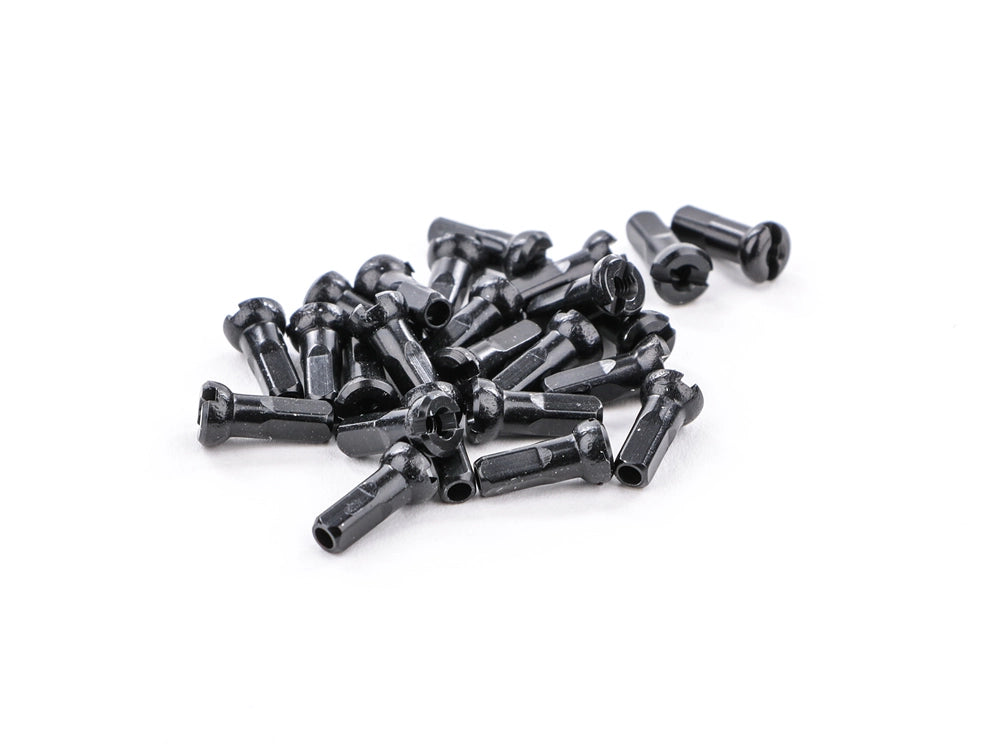
Nippels
Nippels verschillen op verschillende aspecten: hoogte, diameter en materiaal. Niet elke nippel past op elke spaak. Meestal zijn nippels gemaakt van messing of aluminium, waarbij messing de goedkopere en duurzamere, maar ook zwaardere optie is. Bij prestatiegerichte wielen wordt vaak voor aluminium gekozen. Er is echter een groot verschil in kwaliteit als het gaat om aluminium nippels, afhankelijk van het type aluminium en mogelijke coating.
Kwalitatief hoogwaardige aluminium nippels zijn gecoat om galvanische corrosie te voorkomen, een fenomeen waar messing nippels minder vatbaar voor zijn. Een tweede aspect dat de duurzaamheid van aluminium nippels verbetert, is de lengte, waardoor ze meer contactoppervlak hebben met de spaak en beter bestand zijn tegen vermoeiing.
Bij TMWORKS kiezen we ervoor om te werken met aluminium Sapim nippels, een merk dat boven de industriestandaarden uitstijgt als het gaat om materiaalkeuze, behandeling en coating.
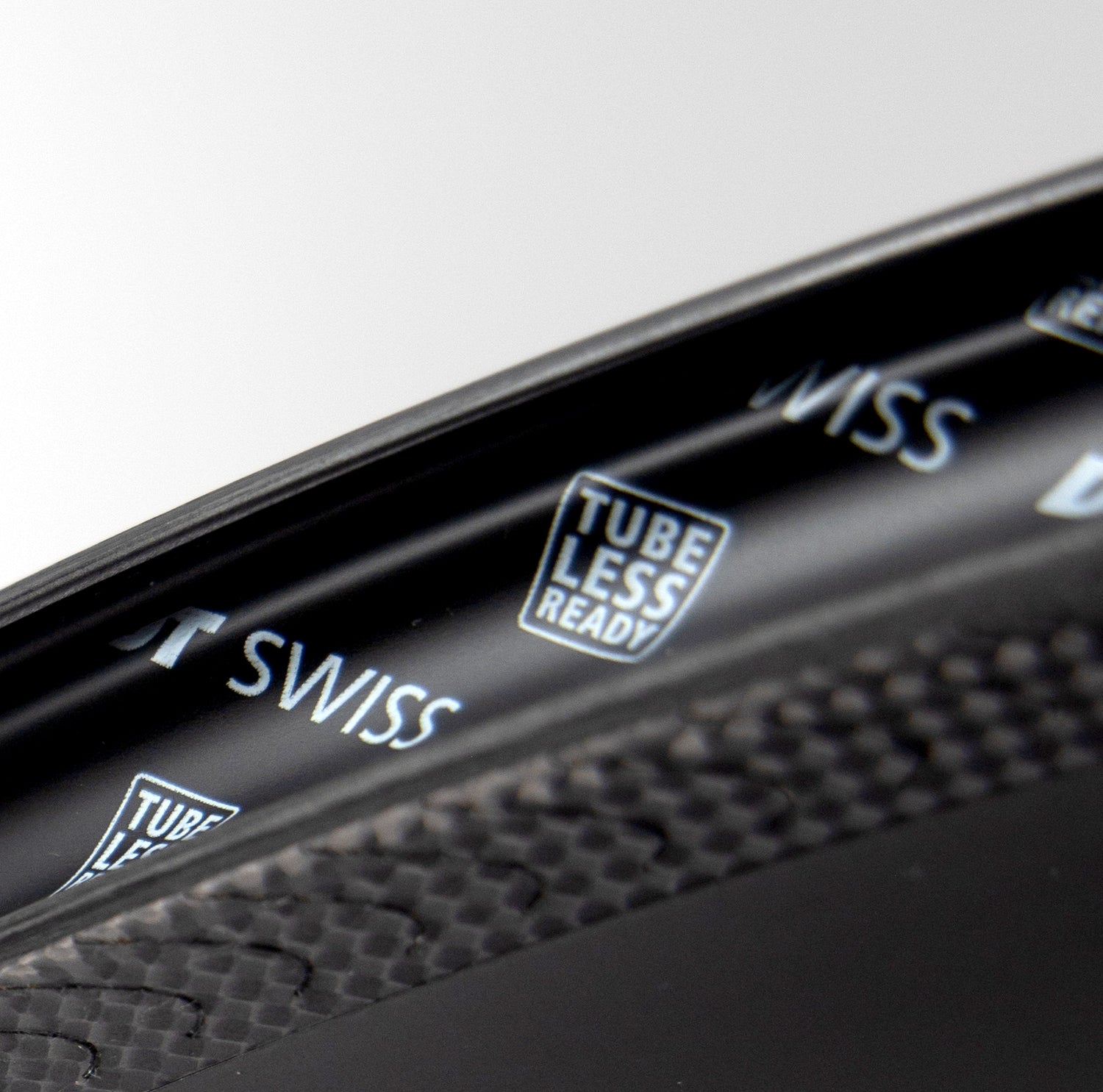
Tubeless
Tubeless banden kunnen enorm voordelig zijn voor de juiste rijder wanneer ze goed worden toegepast, maar het blijft een controversieel onderwerp onder wielrenners. Tubeless banden maken het mogelijk om zonder binnenband te rijden. Dit wordt bereikt door specifieke tubeless banden luchtdicht op de velg te sealen. Tubeless banden hebben over het algemeen een lagere rolweerstand omdat de wrijving van de binnenband ontbreekt wanneer de band vervormt. Daarnaast stelt tubeless technologie de rijder in staat om met lagere bandenspanning te rijden, wat zorgt voor meer grip en comfort.
De controversie komt echter voort uit lekke banden. Bij reguliere banden kan de binnenband eenvoudig worden vervangen, terwijl tubeless technologie gebruik maakt van vloeibare latex afdichtmiddel. Deze latex probeert te ontsnappen wanneer de band wordt lekgestoken, waardoor de lekkage wordt gedicht. In een ideaal scenario althans. Onze ervaring leert dat tubeless technologie het beste werkt bij lagere bandenspanningen. Dat is mede de reden waarom het breed wordt gebruikt in het mountainbiken. Zwaardere rijders die smalle banden gebruiken hebben echter een hogere bandenspanning nodig, waardoor het moeilijker wordt voor het latex afdichtmiddel om de lekkage te dichten. Het rijden met bredere banden kan een oplossing bieden om negatieve ervaringen te voorkomen, aangezien bredere banden een lagere bandenspanning vereisen. Maar het gewicht van de rijder speelt ook een belangrijke rol.

